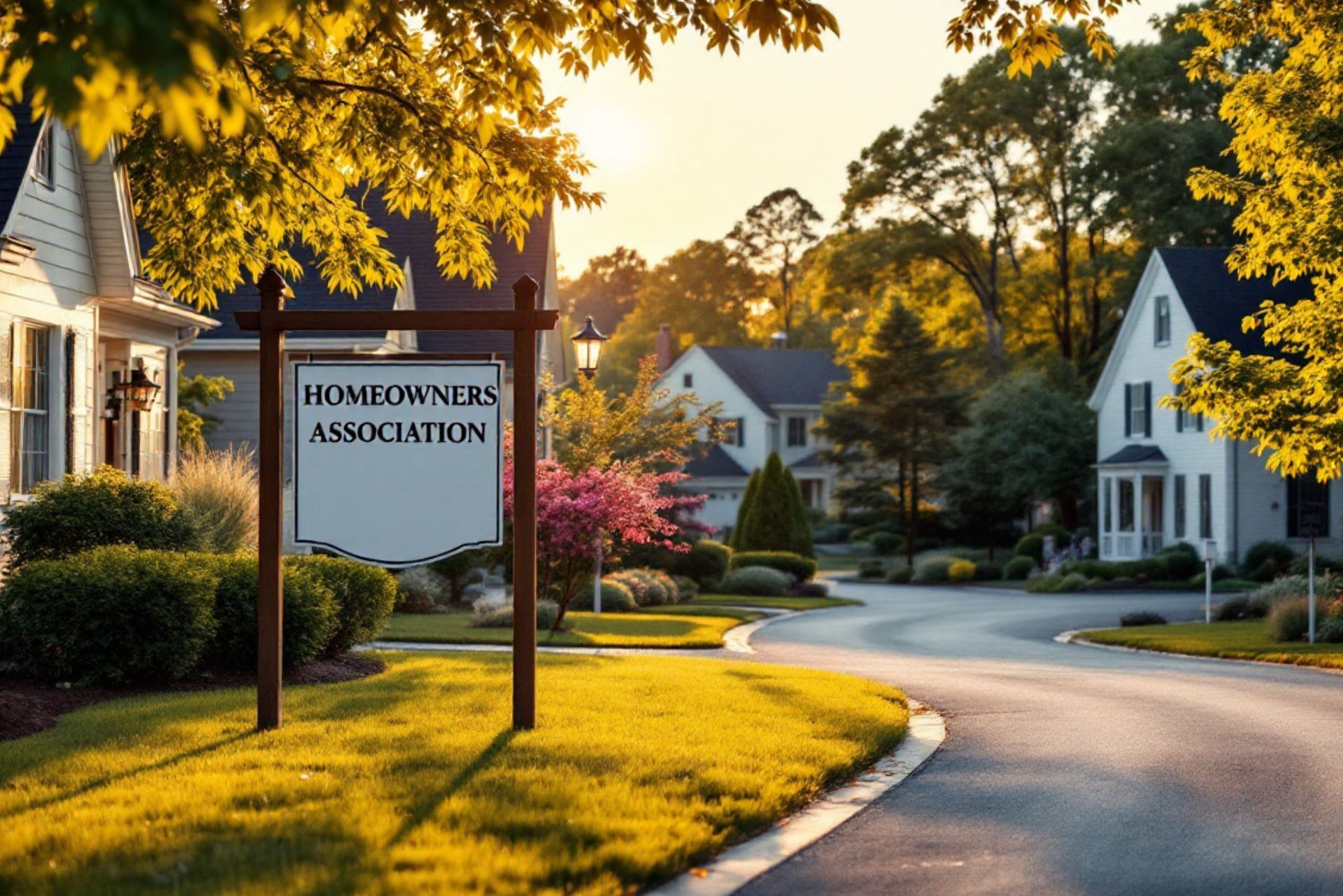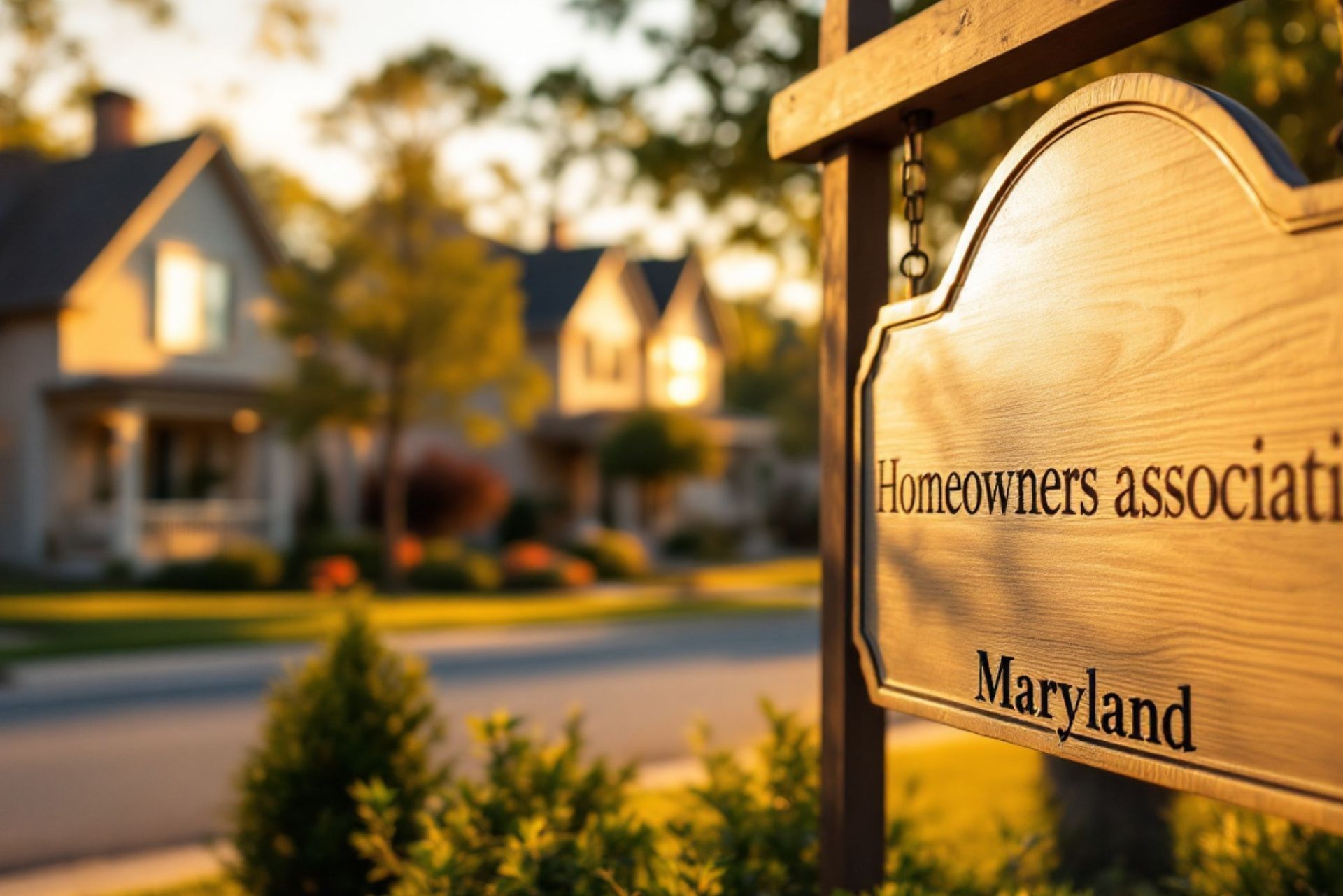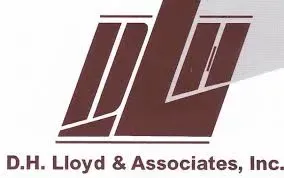Maryland Homeowners Association Insurance
See How We're Different:
Call Us: 202-223-1506
Top 3 Recommended Business Policies
Index
Understanding Homeowners Association Insurance
Types of Coverage in Maryland Homeowners Association Insurance
The Cost of Homeowners Association Insurance in Maryland
How to Choose the Right Homeowners Association Insurance in Maryland
Common Misconceptions about Homeowners Association Insurance
Frequently Asked Questions about Maryland Homeowners Association Insurance
Contact Us
Homeowners associations (HOAs) play a vital role in managing community living in Maryland, ensuring that common areas are maintained and that the property values of members are upheld. However, with the benefits provided by an HOA come responsibilities, especially in terms of insurance coverage. This article aims to provide a comprehensive overview of homeowners association insurance in Maryland, detailing what you need to know, why it's necessary, and how to navigate the various options available.
Understanding Homeowners Association Insurance
Before delving into the specifics, it is crucial to understand homeowners association insurance and its significance. Homeowners association insurance is designed to protect community associations and their members from potential financial losses. This insurance typically covers common areas, liabilities, and other community property that may not be covered by individual homeowners' policies.
The Basics of Homeowners Association Insurance
The foundation of homeowners association insurance lies in its ability to safeguard the community against unforeseen events. These can range from natural disasters to liability claims stemming from accidents occurring in common areas. HOAs purchase insurance policies that cover various aspects necessary for the operation and safety of the community.
In Maryland, the basic coverage policies often include property, liability, and Directors and Officers (D&O) insurance. Understanding these components is essential for any HOA to ensure that they have adequate protection and that members' interests are safeguarded. Property insurance typically covers the physical structures and common areas, such as clubhouses, pools, and landscaping, while liability insurance protects against claims made by third parties for injuries or damages that occur on association property. D&O insurance is particularly important as it shields board members from personal liability in the event that they are sued for decisions made while managing the association.
Why Homeowners Association Insurance is Necessary
The necessity of homeowners association insurance cannot be overstated. Without proper insurance coverage, an HOA could potentially face significant financial repercussions following an incident, jeopardizing not just the association but also its members.
Insurance helps to mitigate risks and protect against liabilities. For example, if a visitor is injured in a community's common area, liability insurance will cover medical costs and legal fees. This type of coverage not only protects the association but also helps maintain the value of the properties within the community. Additionally, having robust insurance coverage can enhance the appeal of the community to prospective buyers, as it demonstrates a commitment to safety and financial responsibility. Furthermore, many mortgage lenders require proof of adequate insurance before approving loans for homes within an HOA, making it a critical component of the home-buying process in these communities.
Moreover, the complexities of managing an HOA often necessitate comprehensive insurance policies that can address unique situations. For instance, if a severe storm damages the community's shared facilities, the costs of repairs can be substantial. In such cases, having the right insurance policy can mean the difference between a swift recovery and a prolonged financial struggle for the association. Additionally, as communities evolve and grow, so too do their insurance needs. Regular assessments of coverage are essential to ensure that the policy remains aligned with the current value of the property and the risks faced by the community.

Types of Coverage in Maryland Homeowners Association Insurance
HOAs in Maryland have access to several types of coverage, each serving a unique purpose to protect the association and its members. Understanding these types of coverage can help HOAs make informed decisions when selecting insurance policies.
Property Insurance
Property insurance is fundamental to protecting physical structures and communal properties within the association. This may include clubhouses, pools, landscaping, and pathways. In the event of damage due to events like fire, vandalism, or severe weather, property insurance can cover repair or replacement costs.
It's important for HOAs to perform regular assessments of their properties to ensure the insurance policy adequately reflects current values and conditions. Failure to do so may lead to underinsurance, where the policy does not fully cover damage costs. Additionally, HOAs should consider the potential for natural disasters specific to Maryland, such as hurricanes or flooding, and ensure that their policy includes appropriate coverage for these risks. Engaging with a knowledgeable insurance agent can help associations navigate the complexities of coverage options tailored to their unique needs.
Liability Insurance
Liability insurance is critical for any homeowners association. It provides coverage for incidents that may not necessarily involve property damage but could lead to legal claims against the association. This includes bodily injury or property damage claims filed by residents or visitors.
Without adequate liability insurance, a single incident could lead to financial devastation for an HOA. This type of insurance ensures that any legal costs, settlements, or judgments are covered, thus protecting the association's finances. Furthermore, it is wise for HOAs to implement safety measures and regular maintenance checks to minimize risks associated with common areas. By fostering a safe environment, associations can reduce the likelihood of incidents that may lead to liability claims, ultimately contributing to lower insurance premiums over time.
Directors and Officers Insurance
Many homeowners associations elect a board of directors to manage operations, and this is where Directors and Officers (D&O) insurance comes into play. This coverage protects board members from claims arising from decisions made in their official capacities.
D&O insurance is particularly important, as board members could face lawsuits from residents alleging mismanagement, negligence, or misconduct. Such coverage not only shields the individuals but also encourages qualified individuals to serve on boards without fear of personal financial liability. Moreover, HOAs should consider providing training and resources for their board members to ensure they are well-informed about their responsibilities and the legal implications of their decisions. This proactive approach can help mitigate risks and foster a more effective governance structure within the association.
The Cost of Homeowners Association Insurance in Maryland
The cost of homeowners association insurance can vary widely based on several factors. Understanding these elements can help associations prepare their budgets and manage expenses effectively.
Factors Influencing the Cost
Several factors influence the cost of homeowners association insurance, including the size of the community, the number and type of common property, location, and claims history. For example, an HOA with extensive amenities will generally face higher premiums compared to a smaller community with minimal facilities.
Geographic location within Maryland can also affect rates. Areas prone to natural disasters may see higher insurance costs, as insurers will assess the likelihood of claims arising from such events. Additionally, the past claims history of the association can influence future premiums—frequent claims may indicate a higher risk to insurers, resulting in increased costs.
Moreover, the age and condition of the buildings within the community play a significant role in determining insurance costs. Older structures may require more maintenance and are often viewed as higher risk by insurance providers. Associations that invest in regular inspections and updates to their properties can not only enhance the safety of their residents but may also benefit from lower insurance rates over time.
Ways to Reduce Insurance Costs
Despite the factors leading to higher costs, there are effective strategies that HOAs can employ to reduce their insurance premiums. One of the most effective methods is to bolster security measures within the community. Improved lighting, gated access, and security cameras can help minimize risks.
Additionally, regularly maintaining properties and addressing issues proactively can prevent the occurrence of incidents that could lead to claims. Establishing a comprehensive risk management plan allows associations to demonstrate to insurers that they are taking steps to mitigate risks, which can result in lower premiums.
Another approach is to consider the option of higher deductibles, which can significantly reduce the overall premium costs. However, associations should carefully evaluate their financial situation to ensure they can cover these deductibles in the event of a claim. Furthermore, participating in group insurance policies with other HOAs can provide additional savings through shared risk and collective bargaining power, making it a viable option for smaller associations looking to cut costs without sacrificing coverage quality.
How to Choose the Right Homeowners Association Insurance in Maryland
With a variety of options available, selecting the right homeowners association insurance requires careful consideration. By assessing the needs of your association and exploring different providers, you can identify the best coverage for your community.
Assessing Your Association's Needs
The first step in choosing the right insurance is to assess the specific needs of your homeowners association. Consider factors such as the size of the community, the amenities offered, and the unique risks associated with the area.
Gather input from board members and community members to develop a list of priority coverages. An effective approach is to conduct a risk assessment, identifying potential vulnerabilities that the insurance should cover. This proactive strategy can lead to better-informed decisions and comprehensive coverage.
Additionally, it’s essential to consider the age and condition of the properties within the community. Older buildings may have specific maintenance issues that could increase liability risks, while newer developments might have different coverage needs. Engaging with a qualified insurance broker who understands the nuances of homeowners association policies can provide valuable insights, helping you to tailor your coverage to fit your community's unique circumstances.
Comparing Insurance Providers
Once you have a clear understanding of your association's needs, the next step is to research and compare various insurance providers. Look for companies that specialize in homeowners association insurance and have positive feedback from other HOAs.
Request quotes from multiple insurers to evaluate coverage options and costs. Pay close attention to the fine print, including deductibles, exclusions, and coverage limits. A thorough comparison will reveal the best value for the protection your community requires.
Moreover, consider the reputation and financial stability of the insurance providers you are evaluating. Check for reviews and ratings from other homeowners associations, as well as any complaints filed with state insurance regulators. A provider with a solid track record of customer service and claims handling can make a significant difference in your experience, especially when it comes time to file a claim. Additionally, inquire about the claims process itself—an efficient and straightforward claims process can alleviate stress during challenging times and ensure that your community is adequately protected when it matters most.

Common Misconceptions about Homeowners Association Insurance
As with many topics, there are common misconceptions surrounding homeowners association insurance that can lead to confusion. Clarifying these misbeliefs is essential for every member of the community.
Misconception 1: It Covers Everything Inside the Home
A prevalent misconception is that homeowners association insurance covers all contents within individual homes. In reality, the insurance primarily accounts for common areas and community assets. Individual homeowners must maintain their homeowners insurance to cover personal belongings and interior damage.
This distinction is crucial, as homeowners need to ensure they have their policies in place to avoid gaps in coverage. Communication between the HOA and members can help clarify these responsibilities. For instance, many homeowners may not realize that in the event of a disaster, such as a fire or flood, their personal items like furniture, electronics, and clothing may not be covered under the HOA's insurance policy. This lack of understanding can lead to significant financial losses, underscoring the importance of having a robust personal insurance policy that complements the HOA's coverage.
Misconception 2: It's the Same as Homeowners Insurance
Another common misunderstanding is that homeowners association insurance is equivalent to homeowners insurance. While they both serve protective purposes, they cover different aspects of property ownership.
Homeowners insurance focuses on an individual’s home and possessions, while homeowners association insurance centers around shared property and liabilities within a community. It's important for association members to recognize this difference to ensure comprehensive protection is in place. Additionally, many homeowners may overlook the fact that the HOA's insurance typically includes liability coverage for injuries that occur in common areas, such as pools, clubhouses, or parks. This aspect of the insurance is vital for protecting the association from lawsuits, which can arise from accidents or injuries, thereby safeguarding the financial health of the community as a whole. Understanding these nuances can help homeowners make informed decisions about their insurance needs and ensure they are adequately protected against potential risks.
Frequently Asked Questions about Maryland Homeowners Association Insurance
As you navigate homeowners association insurance, you may have several questions. Here are some of the frequently asked questions to provide clarity on common inquiries.
What Does the Insurance Typically Cover?
Homeowners association insurance typically covers common property damages, liability for accidents occurring in common areas, and protection for board members making decisions for the community. Understanding specific policy limits and exclusions is important, as these may vary by provider.
HOAs should ensure their policies adequately reflect the value of communal assets to avoid underinsurance issues and ensure sufficient coverage in the event of a claim. This includes not only the physical structures like clubhouses and pools but also landscaping, signage, and any recreational facilities that contribute to the community's appeal. Regular appraisals can help maintain an accurate assessment of these assets, allowing the HOA to adjust their coverage as necessary.
Is Homeowners Association Insurance Mandatory in Maryland?
While homeowners association insurance may not be strictly mandated by law, it is widely considered essential for effective community operation and risk management. Most established HOAs require some level of insurance for operational integrity and financial protection.
Consulting with legal professionals or insurance experts can help associations understand their obligations regarding insurance in Maryland, leading to informed decisions about coverage levels. Additionally, some lenders may require proof of insurance before approving mortgages for properties within an HOA, making it crucial for associations to maintain adequate coverage to facilitate home sales and protect property values.
How Often Should the Coverage Be Reviewed?
The frequency of reviewing homeowners association insurance coverage can vary, but it is generally advisable to conduct an annual review. This allows the HOA to stay in tune with changes in property value, community needs, and evolving risks.
Regular assessments ensure that the insurance remains adequate and relevant. Moreover, keeping open lines of communication with members regarding changes in coverage can enhance transparency and trust within the community. Engaging members in discussions about insurance can also foster a sense of ownership and responsibility, encouraging them to voice concerns or suggestions that may lead to improved coverage and risk management strategies.
Furthermore, HOAs should consider the impact of local regulations and environmental factors that may affect their insurance needs. For instance, areas prone to flooding or severe weather may require additional coverage or specific riders to protect against unique risks. By staying proactive and informed, associations can better safeguard their assets and ensure the community's resilience against unforeseen events.
For over 40 years D.H. Lloyd & Associates has provided commercial insurance solutions covering multiple facet of business risk.
QUICK LINKS
CONTACT US
Phone:
202-223-1506
Email: contactus@dhlloyd.com
Address: 1625 K St NW, Washington, DC 20006, United States
All Rights Reserved | D.H. Lloyd & Associates | Privacy Policy | Legal Disclaimer | Sitemap | Built & SEO'd by Convirtue

